Growing Spinach in Pots: Imagine stepping outside your door and harvesting fresh, vibrant spinach for your salad, smoothie, or side dish – all from the comfort of your own patio or balcony! It’s easier than you think, and this guide is packed with DIY tricks and hacks to make it a reality, even if you’re short on space.
For centuries, spinach has been a nutritional powerhouse, cultivated across various cultures for its health benefits. From ancient Persia to Renaissance Europe, spinach has graced tables and nourished generations. But you don’t need a sprawling estate to enjoy this leafy green.
In today’s busy world, finding time for healthy eating can be a challenge. That’s where growing spinach in pots comes in! It’s a fantastic way to ensure you have access to fresh, organic produce without the hassle of a large garden. Plus, it’s incredibly rewarding to nurture your own food from seed to plate. I’m going to show you some simple, effective DIY methods that will have you harvesting delicious spinach in no time. Whether you’re a seasoned gardener or a complete beginner, these tips will help you succeed. Let’s get started and unlock the secrets to a thriving container spinach garden!
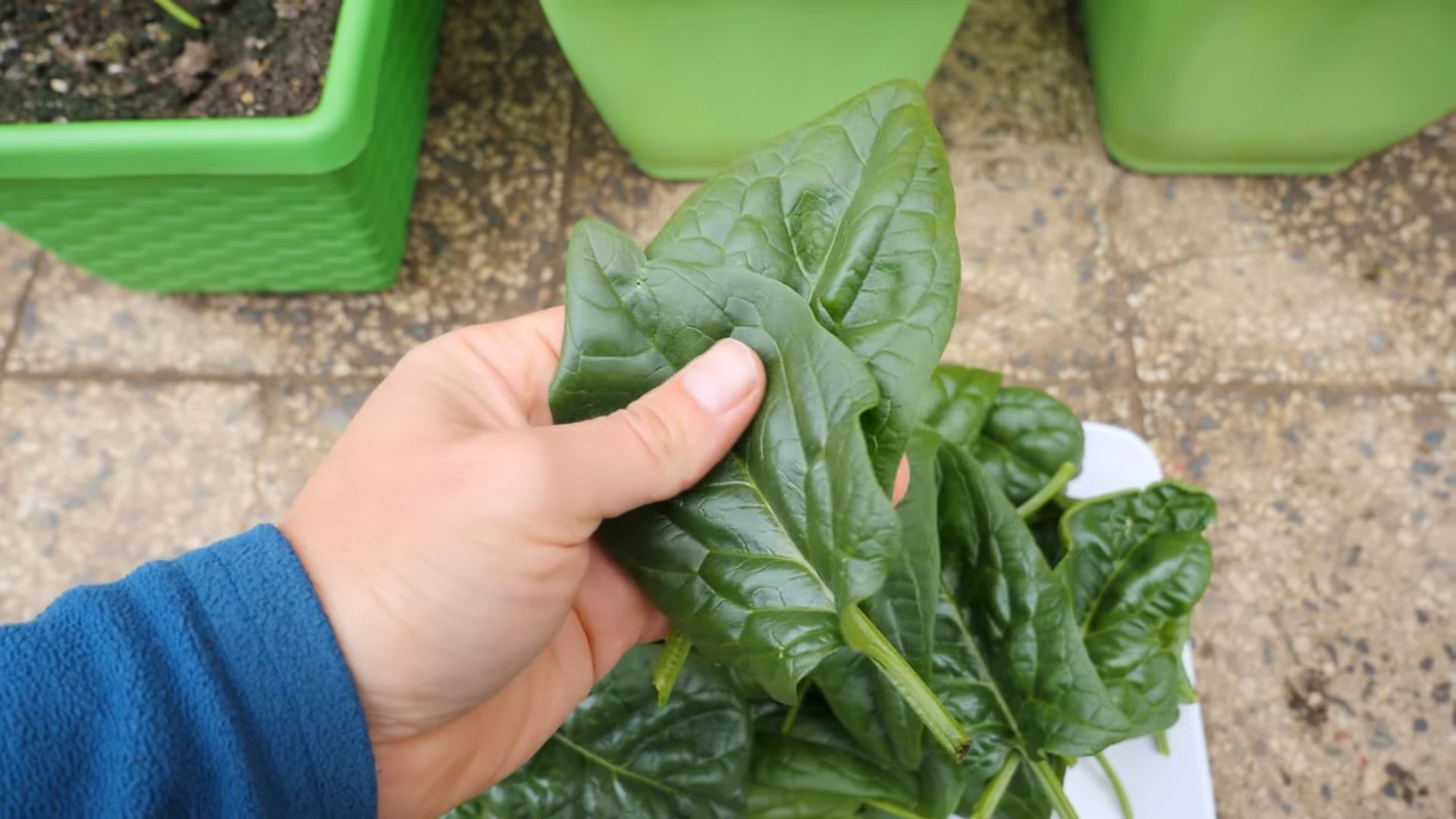
Growing Spinach in Pots: A Beginner’s Guide
Hey there, fellow gardening enthusiasts! I’m so excited to share my experience with growing spinach in pots. It’s surprisingly easy, even if you don’t have a huge garden. Fresh, homegrown spinach is so much tastier than the store-bought stuff, and you’ll be amazed at how rewarding it is to harvest your own greens. Let’s dive in!
Choosing the Right Pot and Soil
First things first, you need to set the stage for your spinach to thrive. This means picking the perfect pot and soil.
* Pot Size: Spinach needs room for its roots to spread. I recommend a pot that’s at least 6-8 inches deep and 6-8 inches in diameter for each plant. A larger pot is always better, as it gives the roots more space and helps retain moisture. You can also use a long rectangular planter to grow several spinach plants together.
* Drainage: This is crucial! Spinach hates soggy roots. Make sure your pot has drainage holes at the bottom. If it doesn’t, you can drill some yourself.
* Pot Material: Plastic, terracotta, or ceramic pots all work well. Terracotta pots dry out faster, so you’ll need to water more frequently.
* Soil: Spinach needs well-draining, nutrient-rich soil. I always use a good quality potting mix specifically designed for vegetables. Avoid using garden soil, as it can be too heavy and compact. You can also amend your potting mix with compost or well-rotted manure to boost its fertility.
Planting Your Spinach Seeds
Now for the fun part – planting those tiny seeds that will soon become delicious spinach leaves!
1. Prepare the Pot: Fill your pot with the potting mix, leaving about an inch of space at the top. Gently pat the soil down to remove any air pockets.
2. Sow the Seeds: Spinach seeds are small, so don’t plant them too deep. I usually sow them about ½ inch deep and 1-2 inches apart. You can sow multiple seeds in each pot, but you’ll need to thin them out later.
3. Cover the Seeds: Lightly cover the seeds with soil.
4. Water Gently: Water the soil gently until it’s evenly moist. Avoid overwatering, which can cause the seeds to rot. I like to use a watering can with a rose head to avoid disturbing the seeds.
5. Find the Right Spot: Place the pot in a location that receives at least 4-6 hours of sunlight per day. Spinach prefers cooler temperatures, so a spot with morning sun and afternoon shade is ideal, especially in warmer climates.
Caring for Your Spinach Plants
Once your spinach seeds have sprouted, it’s time to nurture them and help them grow into healthy, leafy plants.
1. Watering: Spinach needs consistent moisture, but it doesn’t like to be waterlogged. Water the plants when the top inch of soil feels dry to the touch. I usually water every 2-3 days, but this will depend on the weather and the type of pot you’re using.
2. Fertilizing: Spinach is a heavy feeder, so it needs regular fertilization. I like to use a liquid fertilizer specifically designed for leafy greens. Follow the instructions on the fertilizer label and apply it every 2-3 weeks. You can also side-dress your plants with compost or well-rotted manure.
3. Thinning: If you sowed multiple seeds in each pot, you’ll need to thin them out once the seedlings have developed a few true leaves. This means removing some of the seedlings to give the remaining plants more space to grow. Choose the strongest, healthiest-looking seedlings and snip off the others at the soil line.
4. Weeding: Keep your pot free of weeds, as they can compete with your spinach plants for nutrients and water. Hand-pull any weeds that you see.
5. Pest Control: Spinach can be susceptible to pests like aphids, slugs, and snails. Inspect your plants regularly for signs of infestation. If you find any pests, you can try spraying them with insecticidal soap or neem oil. You can also hand-pick slugs and snails off the plants.
6. Bolting Prevention: Bolting is when spinach plants start to produce flowers and seeds. This usually happens when the weather gets too hot. Bolted spinach leaves become bitter and unpalatable. To prevent bolting, try to keep your plants cool and well-watered. You can also plant bolt-resistant varieties of spinach.
Harvesting Your Spinach
The best part of growing spinach is, of course, harvesting it!
1. When to Harvest: You can start harvesting spinach leaves when they are about 4-6 inches long.
2. How to Harvest: You can harvest the entire plant at once, or you can harvest individual leaves as needed. To harvest individual leaves, simply snip them off at the base of the plant with scissors or garden shears.
3. Harvesting Technique: I prefer to harvest the outer leaves first, leaving the inner leaves to continue growing. This allows you to harvest spinach for a longer period of time.
4. Post-Harvest Care: After harvesting, wash the spinach leaves thoroughly and store them in the refrigerator. Spinach is best eaten fresh, but it can also be frozen for later use.
Troubleshooting Common Problems
Even with the best care, you might encounter some problems when growing spinach. Here are a few common issues and how to address them:
* Yellowing Leaves: This can be caused by a variety of factors, including nutrient deficiencies, overwatering, or underwatering. Make sure you’re fertilizing your plants regularly and watering them properly.
* Stunted Growth: This can be caused by poor soil, lack of sunlight, or pest infestations. Make sure your plants are growing in well-draining, nutrient-rich soil and that they’re getting enough sunlight. Inspect your plants regularly for pests.
* Bolting: As mentioned earlier, bolting is when spinach plants start to produce flowers and seeds. This is usually caused by hot weather. To prevent bolting, try to keep your plants cool and well-watered. You can also plant bolt-resistant varieties of spinach.
* Pest Infestations: Aphids, slugs, and snails are common pests of spinach. Inspect your plants regularly for signs of infestation and take action to control the pests.
Choosing the Right Spinach Variety
There are many different varieties of spinach to choose from, each with its own unique characteristics. Here are a few popular varieties:
* Bloomsdale Long Standing: This is a classic variety that is known for its large, crinkled leaves and its resistance to bolting.
* Tyee: This is a fast-growing variety that is ideal for spring and fall planting.
* Malabar Spinach: While not a true spinach, Malabar spinach thrives in hot weather and offers a similar flavor and texture. It’s a great option for gardeners in warmer climates.
* Red Cardinal: This variety has beautiful red stems and leaves, adding a pop of color to your garden.
Extending Your Spinach Season
Spinach is a cool-season crop, which means it grows best in spring and fall. However, you can extend your spinach season by using a few simple techniques:
* Succession Planting: Sow new seeds every 2-3 weeks to ensure a continuous harvest.
* Cold Frames or Row Covers: These can protect your plants from frost and extend the growing season into the winter.
* Shade Cloth: In hot weather, shade cloth can help to keep your plants cool and prevent bolting.
Spinach Companion Planting
Companion planting is the practice of planting different plants together to benefit each other. Some good companion plants for spinach include:
* Radishes: Radishes help to deter pests and loosen the soil.
* Lettuce: Lettuce provides shade for spinach plants.
* Strawberries: Strawberries attract beneficial insects that can help to control pests.
* Garlic and Onions: These plants repel many common spinach pests.
Enjoying Your Homegrown Spinach
Now that you’ve grown your own spinach, it’s time to enjoy the fruits (or rather, leaves!) of your labor. Here are a few ideas for using your homegrown spinach:
* Salads: Fresh spinach is a delicious addition to any salad.
* Smoothies: Spinach is a great way to add nutrients to your smoothies.
* Soups: Spinach can be added to soups for extra flavor and nutrition.
* Sautéed Spinach: Sautéed spinach is a simple and delicious side dish.
* Spinach Dip: Spinach dip is a classic appetizer that is always a crowd-pleaser.
* Omelets and Frittatas: Add chopped spinach to your omelets and frittatas for a healthy and flavorful breakfast.
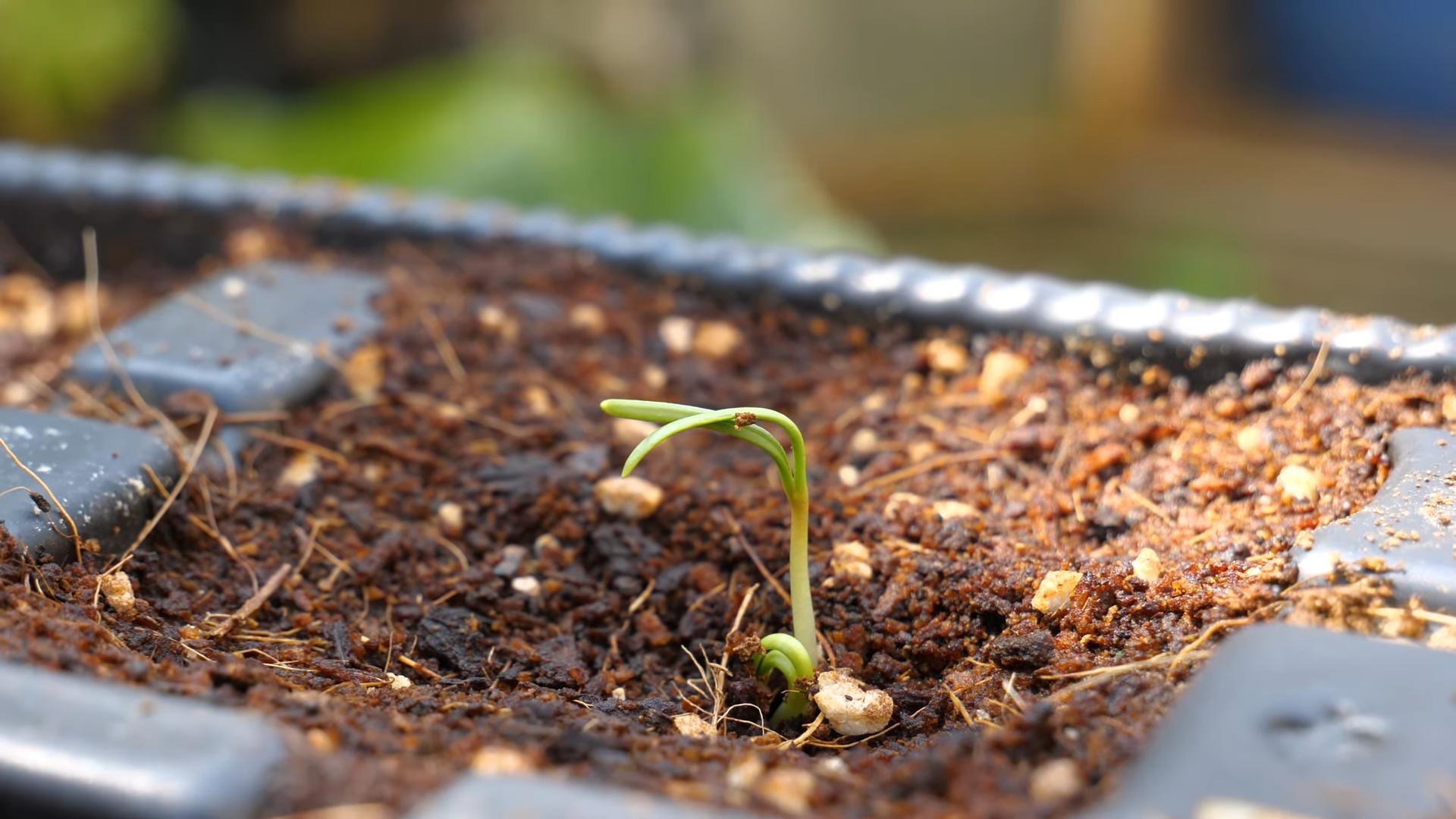
Conclusion
So, there you have it! Growing spinach in pots is not only achievable, but it’s also incredibly rewarding. We’ve walked through the simple steps, from selecting the right pot and soil to nurturing your leafy greens to a bountiful harvest. Why is this DIY trick a must-try? Because it puts fresh, nutritious spinach right at your fingertips, regardless of whether you have a sprawling garden or just a sunny balcony. Imagine stepping outside and snipping off exactly the amount of spinach you need for your morning smoothie, a vibrant salad, or a delicious side dish. That’s the power of growing your own!
Beyond the convenience, growing spinach in pots offers a level of control you simply don’t get with store-bought produce. You know exactly what’s going into your spinach – no mystery pesticides or questionable growing practices. You’re in charge of providing the best possible environment for your plants to thrive, resulting in spinach that’s bursting with flavor and packed with vitamins.
But the benefits don’t stop there. This project is also incredibly accessible. It’s a fantastic way to introduce children to the joys of gardening, teaching them about where their food comes from and fostering a love for healthy eating. It’s also a therapeutic activity for adults, providing a calming and rewarding escape from the stresses of daily life.
Ready to take your spinach game to the next level? Consider these variations:
* Succession Planting: Plant new seeds every few weeks to ensure a continuous harvest throughout the growing season. This way, you’ll always have fresh spinach on hand.
* Companion Planting: Plant your spinach alongside other compatible herbs and vegetables, such as radishes, lettuce, or chamomile. These companions can help deter pests and improve the overall health of your plants.
* Different Spinach Varieties: Experiment with different varieties of spinach, such as Savoy (curly leaves), Semi-Savoy (slightly crinkled leaves), or Smooth Leaf (flat leaves). Each variety has its own unique flavor and texture.
* Vertical Gardening: If you’re short on space, consider using a vertical planter to grow your spinach. This is a great way to maximize your growing area and add a touch of greenery to your balcony or patio.
We’re confident that you’ll find growing spinach in pots to be a fun, easy, and incredibly satisfying experience. Don’t be afraid to experiment, learn from your mistakes, and most importantly, enjoy the process. Now it’s your turn! Grab a pot, some soil, and some spinach seeds, and get growing. We can’t wait to hear about your experiences. Share your photos, tips, and questions in the comments below. Let’s create a community of spinach-loving gardeners! Happy growing!
Frequently Asked Questions (FAQ)
What is the best type of pot to use for growing spinach?
The ideal pot for growing spinach should be at least 6-8 inches deep and wide. This allows enough room for the roots to develop properly. Terracotta pots are a good choice because they allow for good drainage and airflow, but plastic pots are also suitable and tend to retain moisture better. Make sure the pot has drainage holes to prevent waterlogging, which can lead to root rot. You can also use grow bags, which are lightweight and breathable.
What kind of soil should I use for growing spinach in pots?
Spinach thrives in well-draining, fertile soil that is rich in organic matter. A good potting mix specifically formulated for vegetables is an excellent choice. You can also create your own mix by combining equal parts of compost, peat moss (or coconut coir), and perlite or vermiculite. The compost provides nutrients, the peat moss (or coconut coir) helps retain moisture, and the perlite or vermiculite improves drainage. Avoid using garden soil, as it can be too heavy and may contain pests or diseases.
How often should I water my spinach plants in pots?
Spinach needs consistent moisture to thrive, but it doesn’t like to be waterlogged. Water your spinach plants whenever the top inch of soil feels dry to the touch. During hot weather, you may need to water them more frequently, possibly even daily. When watering, water deeply until water drains out of the drainage holes. Avoid overhead watering, as this can promote fungal diseases. Instead, water at the base of the plants.
How much sunlight does spinach need when grown in pots?
Spinach prefers full sun (6-8 hours of direct sunlight per day), but it can also tolerate partial shade, especially in hot climates. If you live in a region with hot summers, providing some afternoon shade can help prevent the leaves from wilting or bolting (going to seed prematurely). Place your spinach pots in a location that receives plenty of morning sun and some afternoon shade. If you’re growing spinach indoors, use grow lights to supplement natural sunlight.
How do I fertilize my spinach plants in pots?
Spinach is a heavy feeder, so it benefits from regular fertilization. Use a balanced, water-soluble fertilizer diluted to half strength every 2-3 weeks. You can also amend the soil with compost or aged manure before planting to provide a slow-release source of nutrients. Avoid over-fertilizing, as this can lead to excessive leaf growth and reduced flavor. Look for fertilizers specifically formulated for leafy greens.
How do I harvest spinach from pots?
You can start harvesting spinach leaves when they are about 4-6 inches long. Harvest the outer leaves first, leaving the inner leaves to continue growing. This cut-and-come-again method allows you to harvest spinach continuously throughout the growing season. Use scissors or a sharp knife to cut the leaves close to the base of the plant. Avoid pulling the leaves, as this can damage the plant.
What are some common pests and diseases that affect spinach grown in pots?
Common pests that can affect spinach include aphids, spider mites, and leaf miners. Inspect your plants regularly for signs of infestation and take action promptly. You can control aphids and spider mites with insecticidal soap or neem oil. Leaf miners can be controlled by removing and destroying infested leaves. Common diseases that can affect spinach include downy mildew and powdery mildew. To prevent these diseases, ensure good air circulation, avoid overhead watering, and use disease-resistant varieties.
How do I prevent spinach from bolting (going to seed)?
Bolting is a common problem with spinach, especially in hot weather. To prevent bolting, choose bolt-resistant varieties, provide afternoon shade, and keep the soil consistently moist. You can also mulch around the plants to help keep the soil cool. If your spinach starts to bolt, harvest the leaves immediately, as they will become bitter.
Can I grow spinach in pots indoors?
Yes, you can grow spinach in pots indoors, but you’ll need to provide adequate light. Place your spinach pots near a sunny window that receives at least 6 hours of direct sunlight per day, or use grow lights to supplement natural sunlight. Keep the soil consistently moist and fertilize regularly. Indoor spinach may not grow as quickly or as large as outdoor spinach, but it can still provide a fresh supply of leafy greens.
What are some good companion plants for spinach in pots?
Good companion plants for spinach include radishes, lettuce, chamomile, and marigolds. Radishes help to break up the soil and deter pests. Lettuce provides shade for the spinach roots. Chamomile attracts beneficial insects that prey on pests. Marigolds repel nematodes and other soil pests. Avoid planting spinach near fennel, as it can inhibit its growth.

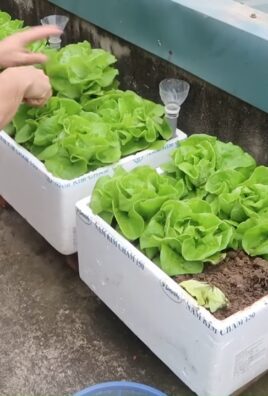
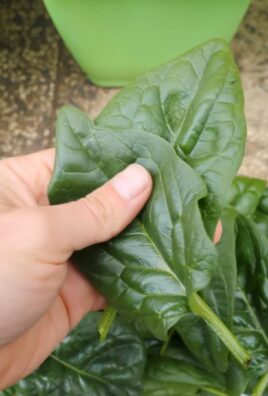
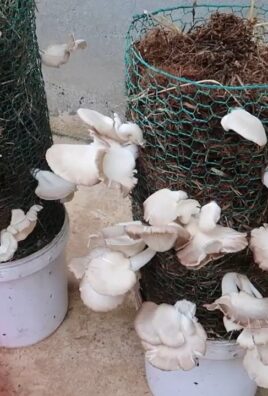
Leave a Comment